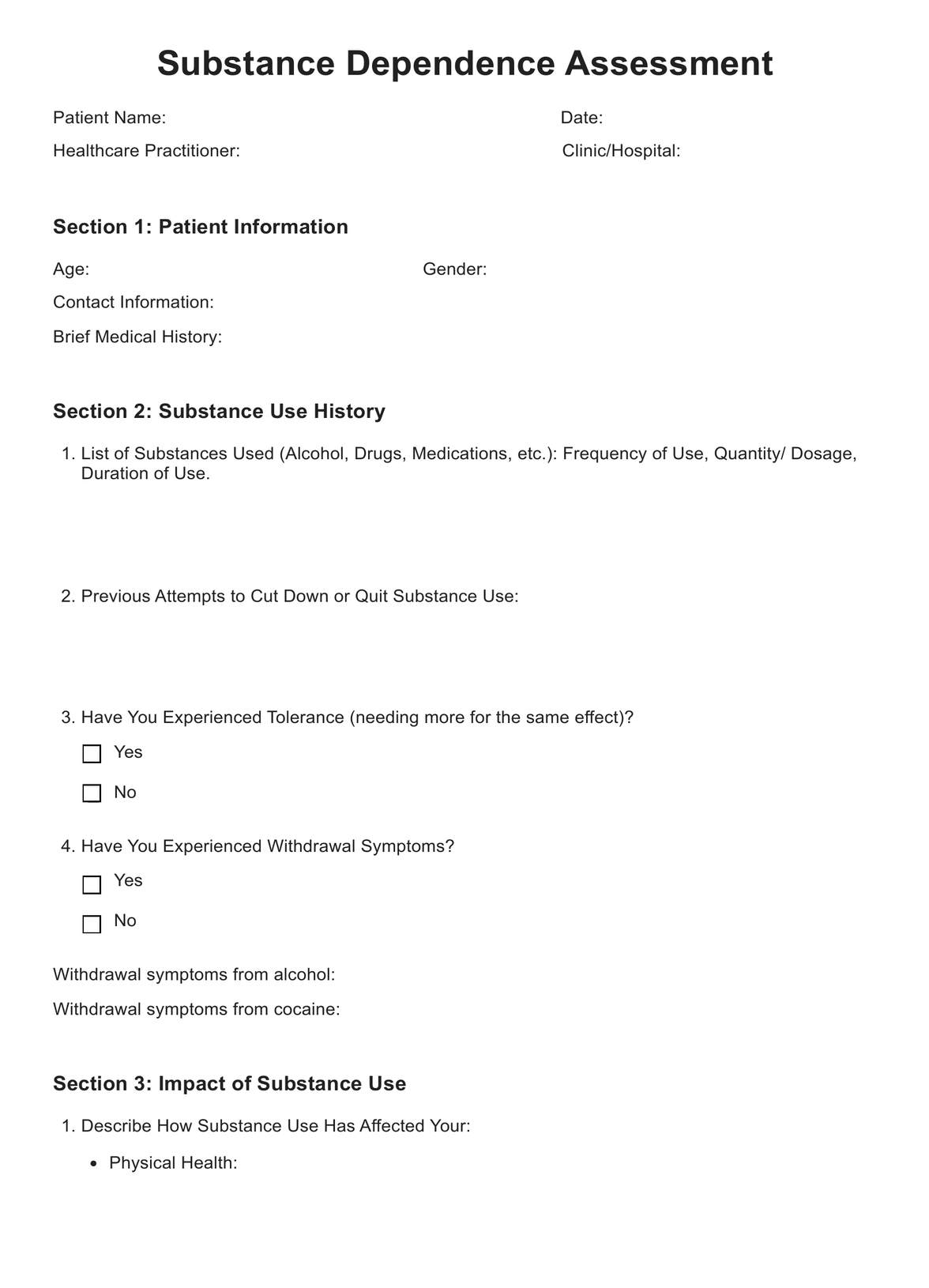The worksheet aims to increase awareness of how avoidance patterns contribute to emotional suffering and hinder personal growth. By documenting avoidance-related experiences, you can better understand your behavior and work toward embracing challenges instead of avoiding them.

Severity of Dependence Scale (SDS)
Evaluate substance dependence with the Severity of Dependence Scale (SDS)—an accurate assessment for effective healthcare interventions.
Severity of Dependence Scale (SDS) Template
Commonly asked questions
The Avoidance and Suffering Diary benefits anyone looking to enhance their emotional well-being and practice mindfulness. It's beneficial for individuals struggling with avoidance behaviors, anxiety, and depression or those seeking to improve their psychological flexibility.
You can use this worksheet whenever you notice avoidance tendencies or feel a sense of emotional distress. Consistent practice can lead to better self-awareness, increased emotional regulation, and a more remarkable ability to face challenging situations.
EHR and practice management software
Get started for free
*No credit card required
Free
$0/usd
Unlimited clients
Telehealth
1GB of storage
Client portal text
Automated billing and online payments











